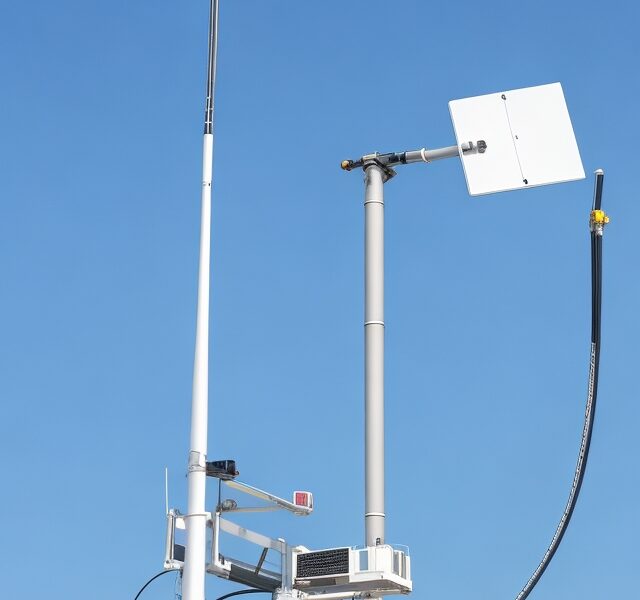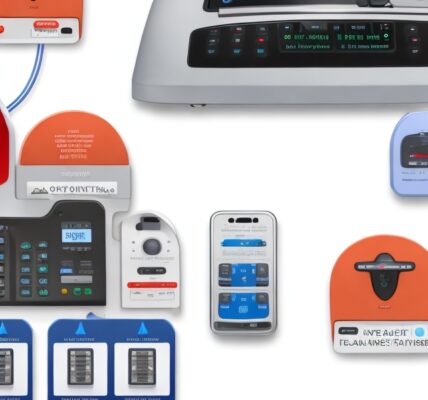GSM BTS (Base Transceiver Station) technology is a key component of the Global System for Mobile Communications (GSM) network. It is responsible for providing wireless coverage and handling the communication between mobile devices and the core network. Here’s a pointwise description of GSM BTS technology:
- GSM Network: The GSM network is a cellular network used for mobile communication. It enables voice calls, SMS messaging, and data transmission for mobile devices.
- Base Transceiver Station (BTS): A BTS is a vital element in the GSM network infrastructure. It consists of the radio transceivers and antennas needed to communicate with mobile devices within its coverage area.
- Coverage Area: Each BTS has a specific coverage area, often referred to as a cell. The size and shape of the coverage area depend on factors like the BTS’s transmit power and the surrounding environment.
- Cell Planning: Cell planning is the process of determining the optimal placement and configuration of BTSs to ensure effective coverage, minimize interference, and maximize network capacity.
- Radio Transceivers: BTSs contain multiple radio transceivers that transmit and receive signals over specific frequency bands. Each transceiver typically supports a specific number of simultaneous calls or data connections.
- Frequency Bands: GSM networks use various frequency bands for communication. Commonly used bands include 900 MHz and 1800 MHz in Europe, 850 MHz and 1900 MHz in North America, and 900 MHz and 1800 MHz in Asia and Africa.
- TRX (Transceiver) Modules: TRX modules are the building blocks of a BTS. Each TRX module consists of a transmitter, a receiver, and associated components for signal processing.
- Antennas: BTSs are equipped with antennas to transmit and receive signals. These antennas are typically mounted on towers or rooftops to ensure optimal coverage and signal propagation.
- Interface with Core Network: BTSs connect to the core network through interfaces such as the Abis interface, which carries voice and data traffic between the BTS and the Base Station Controller (BSC).
- Base Station Controller (BSC): The BSC is responsible for managing and controlling multiple BTSs. It handles functions like call setup, handovers between cells, and allocation of radio resources.
- Cell Handover: Cell handover is the process of transferring an ongoing call or data session from one cell to another as a mobile device moves through different coverage areas. The BSC coordinates and facilitates this handover process.
- Signaling and Control: BTSs exchange signaling messages with the BSC and mobile devices for call setup, call termination, SMS messaging, and other network-related operations.
- Network Optimization: BTSs play a crucial role in network optimization. Techniques such as power control, antenna tilt adjustment, and frequency hopping are employed to enhance network performance, coverage, and capacity.
- BTS Power Supply: BTSs require a stable and reliable power supply. They are typically connected to the electrical grid but also have backup power systems, such as batteries or generators, to ensure continuous operation during power outages.
- BTS Management and Monitoring: BTSs are remotely managed and monitored to ensure their proper functioning. Various network management systems are used to monitor performance, collect statistics, and perform maintenance tasks.
- Evolution to 3G/4G/5G: While GSM BTS technology is primarily associated with 2G networks, it has evolved to support newer generations of mobile communication technologies, including 3G (UMTS), 4G (LTE), and 5G (NR). This evolution involves upgrades or replacements of BTS equipment to support higher data rates and advanced features.
- Interoperability: GSM BTS technology follows international standards set by organizations like the 3rd Generation Partnership Project (3GPP), ensuring interoperability between network equipment from different vendors and seamless roaming for mobile subscribers.
- Security: BTSs implement security measures to protect the integrity and confidentiality of voice and data traffic. Encryption techniques and authentication protocols are employed to prevent unauthorized access and eavesdropping.
- Network Expansion and Densification: As mobile network traffic grows, network operators deploy additional BTSs to expand coverage, improve capacity, and provide better service quality, particularly in densely populated areas.
- Future Developments: Ongoing research and development efforts aim to further enhance BTS technology, addressing emerging challenges and requirements in areas such as energy efficiency, network virtualization, and the integration of advanced technologies like artificial intelligence (AI) and Internet of Things (IoT) devices.
In summary, GSM BTS technology forms the foundation of GSM cellular networks, providing wireless coverage and facilitating communication between mobile devices and the core network. BTSs, along with associated components and interfaces, enable reliable voice and data transmission, cell handovers, network optimization, and ongoing network management and monitoring.
Some more information
GSM BTS (Base Transceiver Station) technology is a cellular network technology that uses radio waves to transmit voice and data between mobile devices and the network. GSM BTS technology is the foundation of the Global System for Mobile Communications (GSM) cellular network standard, which is the most widely used cellular network standard in the world.
GSM BTS technology consists of a number of components, including:
- Base station controller (BSC): The BSC is the central controller for a group of GSM BTSs. The BSC is responsible for managing the radio resources in the group of BTSs, and for routing calls between the BTSs and the rest of the GSM network.
- Base transceiver station (BTS): The BTS is the physical unit that communicates with mobile devices. The BTS contains radio transceivers, amplifiers, filters, and antennas.
- Mobile switching center (MSC): The MSC is the central switching point for a GSM network. The MSC is responsible for routing calls between different GSM networks, and for providing services such as call forwarding and voicemail.
GSM BTS technology works by dividing the service area into a number of cells. Each cell is served by a single BTS. The BTS uses radio waves to transmit voice and data between mobile devices and the network. The BSC manages the radio resources in each cell, and routes calls between the BTSs and the rest of the GSM network. The MSC is the central switching point for the GSM network. It is responsible for routing calls between different GSM networks, and for providing services such as call forwarding and voicemail.
GSM BTS technology has a number of advantages, including:
- Wide coverage: GSM BTS technology provides wide coverage, with cells that can be as small as a few kilometers in radius. This allows GSM networks to provide coverage in urban, suburban, and rural areas.
- Robustness: GSM BTS technology is robust and can operate in a variety of environments, including in areas with high levels of interference.
- Efficiency: GSM BTS technology is efficient in terms of power consumption and spectrum usage.
- Scalability: GSM BTS technology is scalable, and can be easily expanded to meet growing demand.
GSM BTS technology is a mature and reliable technology that has been deployed in over 200 countries and territories. It is the foundation of the most widely used cellular network standard in the world, and it is expected to continue to be used for many years to come.
Here are some additional details about GSM BTS technology:
- Frequency band: GSM BTS technology uses the 900 MHz and 1800 MHz frequency bands.
- Data rate: GSM BTS technology supports data rates up to 14.4 kbps.
- Security: GSM BTS technology uses a variety of security features to protect calls and data from unauthorized access.
- Standards: GSM BTS technology is based on the GSM standard, which is an open standard developed by the GSM Association.
GSM BTS technology is a vital part of the modern telecommunications infrastructure. It is used to carry voice, data, and video traffic over a wide area. GSM BTS technology is also used in a variety of other applications, such as machine-to-machine communications and M2M.
The future of GSM BTS technology is bright. As the demand for mobile data continues to grow, GSM BTS technology will be used to deliver high-speed broadband to homes and businesses. GSM BTS technology will also be used to carry data traffic between data centers and cloud computing providers.
GSM BTS technology is a key technology for the future of telecommunications. It offers wide coverage, robustness, efficiency, scalability, and security. As the demand for mobile data continues to grow, GSM BTS technology will become increasingly important.


